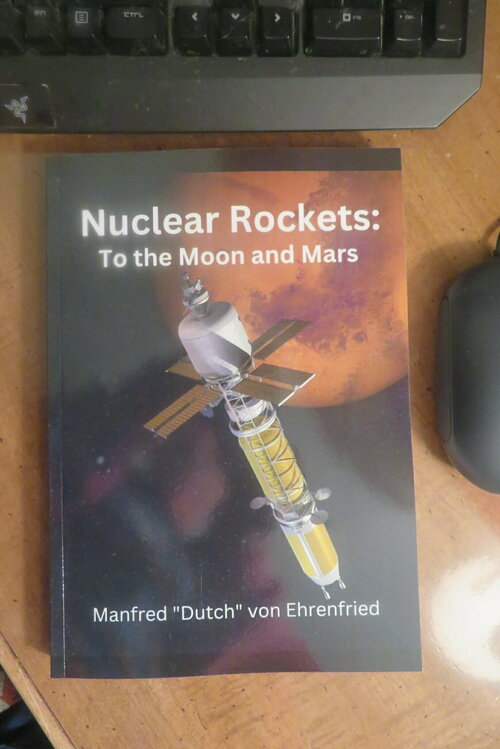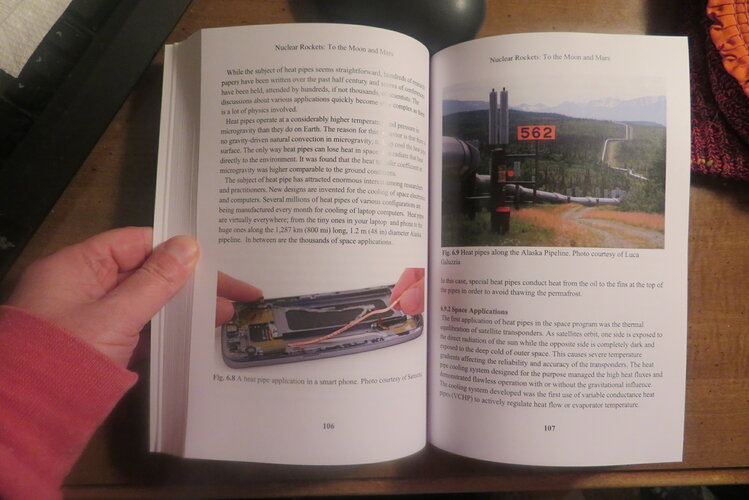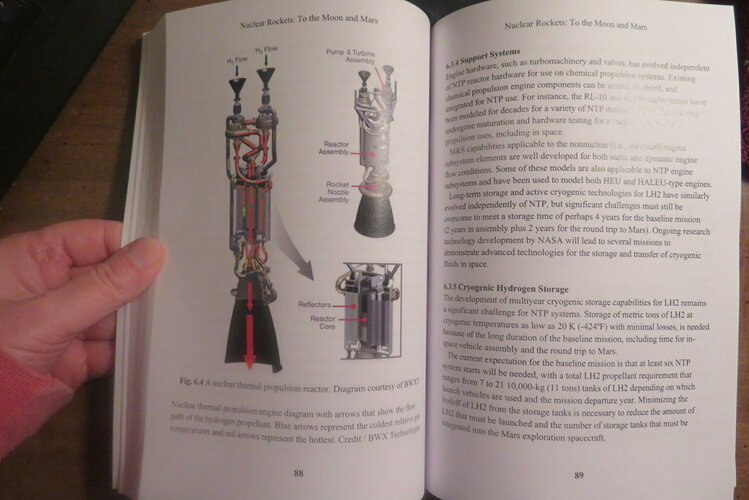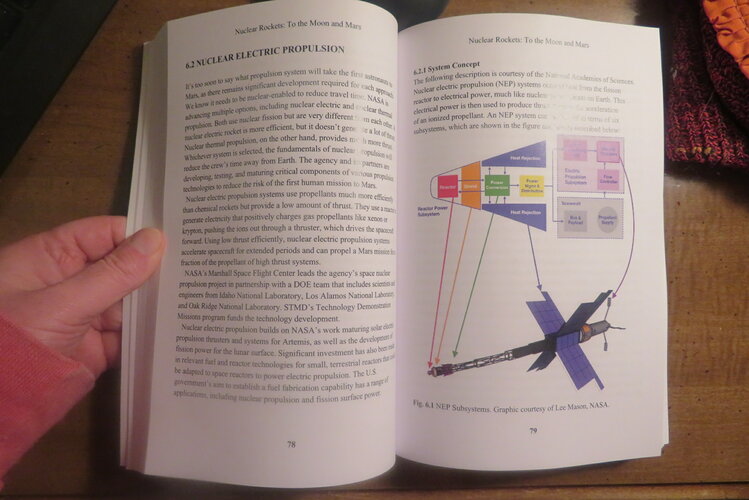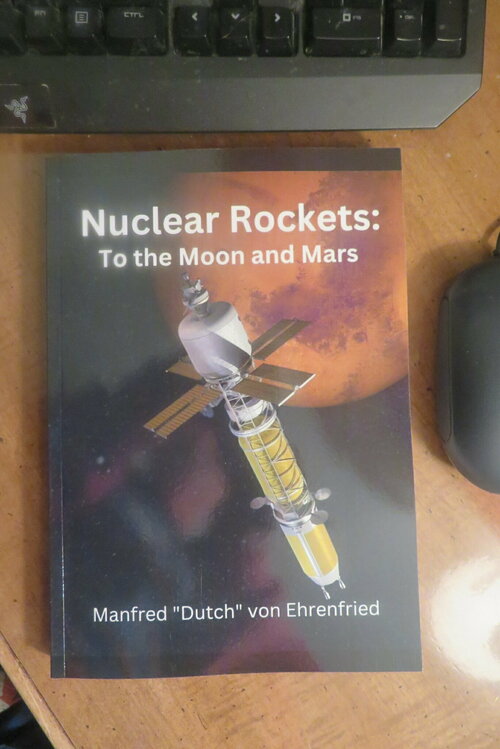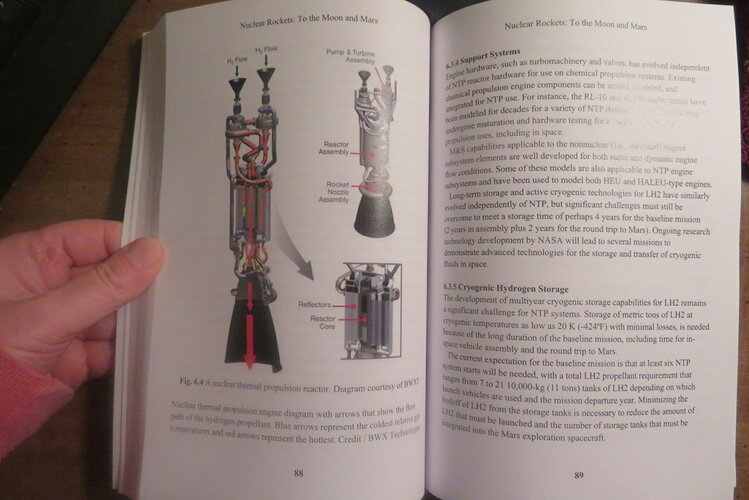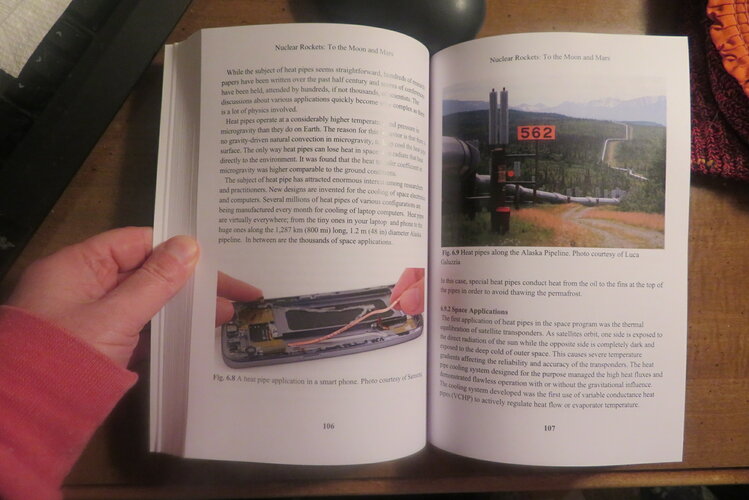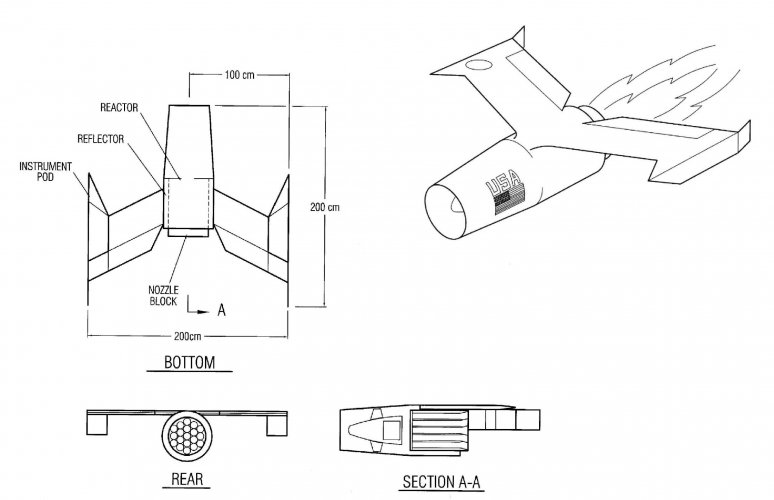southwestforests
ACCESS: Top Secret
- Joined
- 28 June 2012
- Messages
- 752
- Reaction score
- 1,204
A copy of that arrived here yesterday.A recent book on nuclear spacecraft
Amazon.com
Have only skimmed through it at this point.
Looks good.
Was published April 16, 2023; is print on demand and this copy was printed January 23 in the little burg of Monee, Illinois, just south of Chicago.
Just for fun, here's a 2009 NASA interview with the author,
Here's the beginning of it,
Wright: Today is March 25th, 2009. This oral history interview with Manfred “Dutch” von Ehrenfried is being conducted for the Johnson Space Center Oral History Project in Lago Vista, Texas. The interviewer is Rebecca Wright, assisted by Sandra Johnson. We thank you so much for taking time this afternoon to sit down and visit with us for this project.
von Ehrenfried: Well, this ought to be fun.
Wright: We’re looking forward to it. We would like to start today by you sharing with us how you first became involved with NASA.
von Ehrenfried: Okay. I was going down to Langley [Air Force Base], [Hampton] Virginia to join the Air Force, and I was teaching school, and I was applying for jobs at the national laboratories, having just gotten a degree in physics. I thought I would be a physicist. But they would send me back little terse letters like, “Well, when you get your PhD, give us a call.” In the meantime I realized that I wasn’t going to go to a national lab. But I was interested in flying. So I went down to Langley, took my physical, flunked it—because I checked item 12, had asthma as a child, or something like that. Flunked me on the spot. I walked out the door with my head between my tail and just was really depressed. I saw a sign that said NASA [Langley Research Center]. I said, “Well, I’ve heard of them.” Knocked on the door, so to speak, interviewed with Chris [C.] Critzos, who showed me around, and met Gene [Eugene F.] Kranz and John [D.] Hodge and a few others. Sort of hired me on the spot, like, “You’re just what we needed.”
